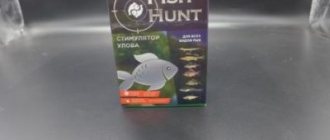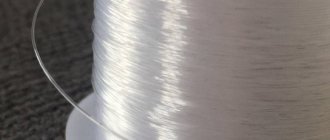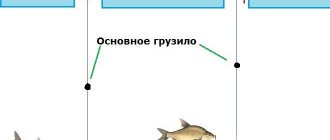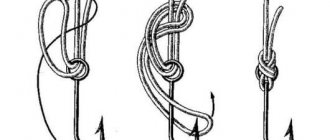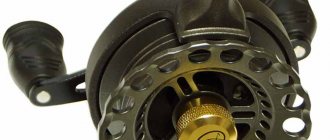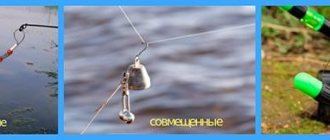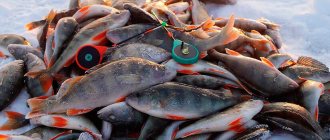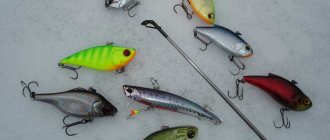The strength indicators that manufacturers indicate on the packaging should be reduced by about 25-30%, since in the vast majority of cases they do not correspond to reality. For example, a braided cord with a strength of 12 kg will actually support 8-9 kg.
Regarding the braid, it is worth saying that the indicator of its diameter is a completely abstract parameter, since it is calculated by the shell or even by its appearance. Currently, many manufacturers no longer indicate the diameter of the fishing line, but leave only the strength indicator in Kg or Lb (0.453 kg).
Which braid is best for spinning?
Different manufacturing companies have their own unique manufacturing technologies.
When choosing a braid, you should carefully inspect the spool of cord for any abrasions, unevenness in the weaving, and differences in color between skeins.
Also, the cord should have a rounded shape, since flat or slightly flattened cords often wind unevenly on the spool and subsequently form so-called beards.
The impregnation of a braided cord is also important: low-quality cords are often sprinkled with impregnation right in the box. You should also refuse such a purchase.
Choosing line color
Among vertebrates, the presence of color vision is believed to be found in all bony fish, whose bright colors often rival the colors and plumage of tropical birds, some amphibians (tropical frogs, toads, axolotls) and reptiles (agamas, turtles, lizards, geckos, snakes).
A number of patterns in the functioning of the color receptor were studied specifically in the study of the retina of fish (very similar to the retina of primates) and reptiles, and not on the retina of humans. Previously, work on the study of color vision in fish was carried out using multi-colored feeders, colored stripes, etc. Then, special spectrophotometric equipment came to the aid of ichthyologists, which immediately confirmed that fish really distinguish colors! Moreover, the color of surrounding objects is important for fish. Therefore, from a scientific point of view, those fishermen who claim that, for example, the color of the fishing line or bait is not important for fish, are fundamentally mistaken!
Although not only fishing enthusiasts, but also scientists are not entirely unanimous in their assessment of the color vision of fish. Some researchers have found that fish perceive color in exactly the same way as humans (only fish, unlike us, do not know that red is red, etc.). And another part of the researchers believes that fish have an even greater range of perceived color waves compared to humans! So, no matter how fishermen try to choose the ideal color of the bait, the human eye is still no match for the fish and, perhaps, we do not perceive the most optimal and attractive color for the fish at all...
Fish of some species can perceive polarized light, which contains ultraviolet rays; many birds and insects perceive such light, but humans do not notice it. But this is a very important point for fishing practice. Let's remember what polarized light is? Normally, natural light waves oscillate in all directions, but often, after reflection from some surfaces, most of the light radiation oscillates in one direction, such light is called polarized in that direction. So far, there are preliminary studies that in turbid water, perches (experiments were carried out on largemouth bass) can see objects at a distance three times greater than the human visibility zone!
It should be noted that not all fish are able to see polarized light. In fish that do not have this feature, the visibility range and ability to distinguish colors in muddy water is approximately the same as for humans - about 40 cm in muddy water. And if a fish distinguishes polarized light, then its visibility zone in muddy water can exceed one and a half meters! Moreover, fish that perceive the polarization of light can navigate by the sun even on cloudy days. The reason for the debate about the ability of black and yellow perch, trout and salmon to see polarized light was the ability of these fish to navigate during long-distance migrations.
Read: Types of wading overalls
Research has shown that largemouth bass see colored objects at much greater distances than humans. Fishermen have long known that predatory fish with developed vision bite perfectly on bait at night or in very turbid water. Why is this happening? Perhaps this phenomenon is associated with the ability of perch to determine the polarization of light? If so, this would explain why perch find prey in unfavorable conditions. It has been proven that the green sunfish sees polarized light. And the structure of the black perch's eye is similar to the structure of the sunfish's eye. We have little information, but perhaps pike perch also have the ability to perceive polarized light. And, for example, pike and some other fish have a different eye structure, but they can also determine the polarization of light. Scientists at the University of Pennsylvania have designed a device that uses polarized light to locate objects in murky water. But research into the ability of fish to perceive colors, polarized light, and ultraviolet rays is technically difficult to implement. We don't expect evidence to emerge soon as to whether fish see ultraviolet, polarized light, etc.
However, many manufacturers of fishing lures claim that their products reflect ultraviolet and polarized light. Such statements play a role when anglers use transparent fishing lines, which often act as a kind of light guide. So far there is little information, but most likely various perch-like fish, salmon, trout and many fish of other species, which have so far been little examined in this regard, should respond to “reflective” baits and fishing lines.
Well, now we will analyze specific colors and the attitude of fish to them in order to make the problem of choosing the color of the fishing line less painful... We must take into account that representatives of the Pisces class have significant morphological and anatomical differences among themselves, including in the structure of the visual analyzer (in other words, in the structure of their eyes). So, fish “in general” see colors, but compared to humans, their eyes are more sensitive to warm colors, that is, yellow, orange and red. And if you are going to attract fish with the color of the bait, then these colors are, of course, welcome. But a fishing line of this color will simply scare many fish. Here the color of the surrounding background also plays a role in fish, just like with us, the red fishing line will merge with the reddish surroundings, for example, in reservoirs where timber rafting is carried out, or on peat lakes. It should be clarified that everything written concerns mainly freshwater fish, since for marine fish the color of the fishing line is much less important.
Read: Classification of fishing lines, their disadvantages and advantages
In freshwater bodies of water, red, yellow and orange fishing lines are clearly visible to fish even in very turbid water, since the red-yellow color corresponds to light with a longer wavelength and is less scattered by turbidity (suspension) particles. Green, blue, bluish fishing lines are less noticeable, since, depending on the illumination of the reservoir, they often merge with the water and the sky reflected in it. Fish, as a rule, are less wary of such colors and will pay less attention to your fishing line. But this applies to pelagic and coastal fish. If you fish at great depths, where there is little light, then any line there will be less noticeable, and this must be taken into account. The perception of red fishing lines by fish extends to approximately a depth of 5 m. According to ichthyologists, a white fishing line will be clearly visible to fish both at depth and at the surface; this color frightens fish, and they can identify it perfectly. The only exceptions are very cloudy days.
The next factor that you need to pay attention to when choosing the color of the fishing line is the season. In winter, in reservoirs that are covered with ice, the vision of fish is more sensitive to multi-colored and bright fishing lines. And in the open water season, in conditions of poor visibility (cloudy weather, muddy water, etc.), fish are well attracted by any light and bright bait, but such a fishing line is scary. Thus, in the winter season, taking into account the peculiarities of the color vision of fish, a regular monofilament fishing line, transparent, colorless or slightly bluish, would be preferable. With such a fishing line in winter, you will most likely catch perch, roach, and silver bream.
If you are going to catch fish that live at greater depths (for example, pike perch), then braided fishing line (excluding bright fluorescent line) will not be noticeable to them. In summer, conditions are more varied, and it is difficult to give clear recommendations on the choice of fishing line color. In summer, the fishing line is selected based on the color of the water of the reservoir, the presence of vegetation, the color of the bottom, etc. In muddy water, the color of the fishing line is not decisive for camouflaging the gear, but this is not always an axiom. Therefore, in the summer, be sure to focus on the specific fish you are going to catch.
So. bream and other shy fish will take the bait more easily if the fishing line is transparent and colorless (but does not transmit light from the surface of the water). Dark fishing lines in muddy or cloudy water are hardly noticeable for ide, silver bream, white bream, perch and some other fish. And for fishing for carp and carp, a dark, even black color of fishing line is preferable!
These were all peaceful fish, which are more sensitive to color perception in general and fishing line in particular. Although the visual acuity itself is an order of magnitude higher in predatory fish. But here other biological laws already come into force, primarily different feeding strategies, when “peaceful” fish have the opportunity to examine their prey, while predators are more spontaneous, and they are also less timid and cautious. That is, when catching predatory fish, you may not choose the colors of the fishing line so carefully, but only if you are not looking for asp (except for periods of fattening). This cautious fish has very sharp eyesight, and the asp can be caught only with the thinnest fishing lines that do not stand out in color against the background of the reservoir.
Read: Rating of the best PVC boats, types and classification, advantages and disadvantages
Ichthyologists have found that pike perch perfectly recognizes and identifies all objects of yellow color (and most likely colors of a similar spectrum), so when catching this fish, avoid yellow fishing lines, even on reservoirs with a yellow sandy bottom. Another important point for both predatory and peaceful fish. Regardless of the color of the fishing line, it is important that it does not reflect the sun's rays in the water and does not scare away the fish. It would seem that. Transparent fishing lines, which are ideal from the point of view of being invisible to fish, on the contrary, can frighten them with their reflection of light from the surface of the water. That is, on bright and especially sunny days, the transparent fishing line acts as a light guide, which is very sensitive to the vision of fish of almost all species.
Now the Japanese have begun to produce transparent fluorocarbon fishing lines that have a refractive index similar to the refractive index of water (for example, fishing lines from Kureha). These monofilaments are practically invisible to most fish. The dark (more like nickel-black) color of some fishing lines (for example, Nexave Extra strong from Shimano) also helps to get rid of the “light transmission” of the fishing line. However, they will be clearly visible to fish in clear water in the coastal zone and near the surface, but for deep fishing this is a very good option. In addition to color, the diameter of the fishing line is also important for the visual perception of fish. The rule here is this: the thinner the line, the less the fish eye notices it.
We must not forget that coloring affects the strength of the fishing line. The most difficult color in this regard is black. Therefore, when choosing black fishing lines, try not to save money, but to buy proven products from well-known manufacturers. Unfortunately, so far ichthyologists have studied the color spectra of a limited number of fish (and most of the species studied in this regard are very exotic for us). So the recommendations of our scientists are often based on fishing experience too. Don’t be afraid to experiment with the color of the fishing line, comparing and analyzing factors such as season, lighting, and the color background of the reservoir and bottom.
Braided Cord Structure
In braided cords, the fibers form thin threads, which in turn are woven into thicker threads. A cord with a more complex weave will be stronger and more reliable. There are also cords in which thin fibers are only tightly twisted, but not intertwined. They lose greatly in terms of strength and durability of use.
Braided cords are based on high-quality polyethylene fibers, which are manufactured in only three factories in the world: Dutch StateMines, American AlliedSigna and Japanese Toyobo, and Dutch and Japanese products are produced under the same Dyneema brand.
It is from these factories that all manufacturing companies buy raw materials, which then manufacture cords using their own individual technologies. Due to different technologies, the characteristics and quality indicators of braided cords differ from different brands.
How to deal with the disadvantages of braided fishing line
There is only one way to combat the price, and that is not to buy long-sized braided cord. For most reservoirs, the working length of the thread will be 30-70 meters, so it is most profitable to buy it 100 meters long and, when winding it on the reel spool, compensate with cheap monofilament fishing line, winding it under the braided thread.
The property of the lack of stretchability of the braid can be used at long and close distances, as it makes it possible to instantly feel the bite of a predator and understand its behavior, but if the reel is incorrectly configured, a sharp bite from a large predator can lead to breakage of the rod, since there will be no compensation for the blow when biting . Therefore, you need to learn how to set up and use the reel brake.
Additionally, the lack of stretchability gives a feeling of the weight of the bait on the spinning rod, which increases the reaction in the movement of the bait when retrieving it and manipulating the tip of the rod and spoils the game of the bait, take this property into account, perhaps this is the reason for failures when fishing with a spinning rod.
We recommend: Fishing spots in the Moscow region, Pakhra River, Zelenovsky Omut
Almost all braids float on the surface of the water, and this probably scares the fish, since they can see it, but this is a fact that has not been proven by anyone. In this situation, the use of fluorocarbon leashes 1 to 2 meters long helps.
In shallow water, leashes up to a meter long are used, at depths or when using heavy baits up to 2 meters.
The diameter of the fishing line for the leash should be selected based on the breaking load of the fishing line; it should be greater than the breaking load of the cord, but not more than twice.
Which braid to choose for jig
When choosing braid specifically for jig fishing, you need to take into account the characteristics of the type of fishing itself.
Braided fishing line should have a minimum elongation coefficient, which will allow the fisherman to better feel the topography of the bottom of the reservoir and catch every bite.
The braid for a jig must also be very slippery in order to make long casts without problems.
When fishing in difficult conditions (for example, in snags and shell rocks, where the chance of breaking is extremely high), the braid should be enclosed in a shell.
When and why to use braided line
Braided line can be used in almost all situations. Its advantages over other fishing lines are as follows:
- Small diameter at high breaking loads;
- Possibility of longer casts, due to materials that have less friction force with rod rings;
- No stretch and high sensitivity - unlike monofilament, braided fishing line practically does not stretch, which makes the tackle much more sensitive.
Braided line should be used in the following situations:
- When fishing at great depths, both in the sea and in fresh water.
- More line can be placed on a spinning reel compared to equivalent tensile monofilament or fluorocarbon;
- Braided fishing line is much more sensitive compared to other types of fishing line; bites and bites are easily felt with it, and the knots are much stronger.
- Braided fishing line is more wear-resistant, it lasts much longer than other types of fishing line, it does not decompose over time and UV, but one of its downsides is less resistant to cuts when tensioned, that is, it is easy to cut on stones or shells.
- It is indispensable on ultralight gear.
It also has disadvantages, these are:
- High price compared to other types of fishing lines;
- It is not prone to stretching, this is both a plus and a minus;
- Almost all braids float on the surface of the water;
The best winter fishing lines rating
The rating of the best types of fishing line for winter fishing includes various types of products from domestic and foreign manufacturers: Balsax Ice King - frost-resistant monofilament fishing line, characterized by good quality and low cost. One of the disadvantages of this model is the loss of strength at the joints and knots. Vicious Panfish Ice - high resistance to abrasion, low level of elongation and lack of memory, as well as the strength of the polymer material, make this type of fishing line indispensable for winter fishing. Power Pro Ice-Tec is an elastic, soft, highly sensitive winter line that guarantees excellent strength with a small diameter. A special coating imparts water-repellent properties to the material and reduces the formation of ice on the thread. Berkley FireLine Micro Ice Fused Original is a frost-resistant, transparent line from an American manufacturer designed specifically for winter fishing at sub-zero temperatures. Does not stretch, therefore retains sensitivity. The thread is completely invisible under water. Has high tensile strength. Berkley FireLine Micro Ice Fused Original is an invisible fluorocarbon filament that can remain strong in the thinnest thickness without memory effect. One of the best options for winter fishing line. Berkley Trilene 100 Percent Fluorocarbon Ice is a line with a hydrophobic composition that virtually eliminates the possibility of liquid freezing on it. Unique tear resistance allows this model to be used even when fishing for heavy fish.
PowerPro ICE-Tec is a durable braided line that is popular with ice fishing enthusiasts. Flexibility, knot strength, sensitivity and hydrophobicity - these qualities allow it to become one of the best types of fishing line. Momoi Pro Max Prestige is a Japanese type of monofilament fishing line that is strong and reliable during ice fishing. Its texture is soft and does not have a memory effect. Aquamarine fishing line is used very often for winter fishing. This is due to its improved strength characteristics, abrasion resistance and small diameter. In addition, it has an affordable price. Advice: when choosing the best winter fishing lines for fishing, the performance rating is very indicative, but you don’t need to focus only on it, you should also take into account your individual preferences.
How to choose the right fishing line for winter fishing
Winter fishing is quite multifaceted, but fishing line is used everywhere, and it is important not to make a mistake in choosing it.
Important! Experienced fishermen do not recommend buying fishing line with a reserve, since over time it loses its flexibility and strength.
When purchasing this product, you need to consider the following factors:
- thickness - when fishing in winter on the first ice, you can use a product with a diameter of 0.15-0.16 mm, and in the middle of winter, as the ice thickness increases, the diameter should be 0.06-0.08 mm;
- holding weight limit - you need to read it on the packaging to determine whether this device can be used to hold the desired fish;
- softness - this factor is necessary so that the thread does not turn into a wavy spiral when twisted. This may prevent the fisherman from seeing the bite;
- density and stability - when rubbing against the edge of a hole, shell rock or pebble bottom, the fishing line can form knots, which will reduce its strength and efficiency.

For fishing from ice or shore
Fishing from ice or shore in winter requires the correct choice of fishing line.
Important! When buying fishing line in a store, you need to unwind about 0.5 m of the product and stretch it between your fingers. It should be smooth, even, without thickening, sagging or burrs.
The general requirements have already been stated above, but do not forget about the types of threads for winter fishing:
- Monofilament. It is one of the oldest and most popular species. Ice from this product can be easily removed by hand, and the durable materials in its composition make it resistant to temperature changes.
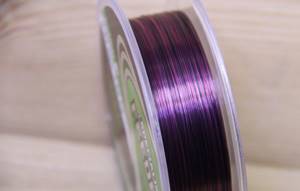
- Fluorocarbon. A relatively recent invention among fishing products. It is very transparent and durable, but it is rigid. Below the thread is discussed in more detail.
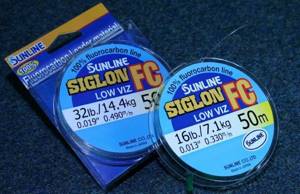
- Network. It is often used by fishermen, but it has a significant disadvantage, which is that it is difficult to remove ice by hand.
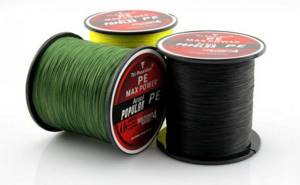
- Monofilament. The winter product is very durable and completely transparent, which has significant advantages when fishing.
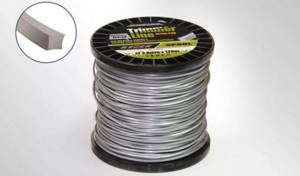
Fishing line for jig
When planning jig fishing, you need to determine what size fish you will be hunting for:
- for small animals you need to choose a thread diameter of about 0.1 mm and a length of at least 50 m;
- for large fish, the cross-section of the thread should be 0.12 mm and the length should be about 50 m.
You need to fish with weighted jigs and lightweight spinners.
Did you know? The very first prototypes of fishing line in the world were horse hair, silk thread and animal tendon.
